Muscle Pain in the Neck
When you feel pain in the neck region during some activities of daily life. This pain happens mainly due to muscle pain in the neck.
This muscle pain arises due to poor posture or overuse of muscle & also due to sleeping in an uncomfortable position.
Sometimes this pain arises due to injury occurring from a fall, contact sports & whiplash.
In some circumstances, neck pain is not a serious condition & reduced within a few days.
This pain was relieved in a few days by following the RICE principle, pain medication & physiotherapy treatment.
Types of neck muscle pain
Neck muscle pain is classified as acute pain or chronic pain.
Acute pain:
This muscle pain begins suddenly & a couple of days or weeks.
Chronic & long-term pain:
This muscle pain grows over a longer period and lasts for over 3 months which is happen due to your activities & daily living & becomes too intense & leads to disability.
This neck muscle pain is further classified as axial or radicular neck pain.
Axial neck pain:
This pain is especially felt in the neck area.
Radicular neck pain:
This pain is felt in the neck region & also shoots or radiates into other parts like the shoulder joint & arms.
Causes of the neck muscle pain
Muscle tension & strain:
This neck muscle pain happens due to some activities & behaviors like as include to:
When you pursue the daily poor posture.
You are sleeping with your neck in the wrong position.
When you are accomplishing the work at a desk & for too long without changing position.
During exercise, if occur jerk the neck
Injury:
This neck pain is sometimes due to injury mainly due to falls, car accidents & sports which lead to the affection of the muscles & ligaments of the neck & involved forced to move outside of the normal range.
When the neck bones & cervical vertebrae are fractured sometimes the spinal cord is also injured.
When arising to neck injury from impulsive jerking of the head it is generally called whiplash.
Meningitis:
It is an inflammation of the thin tissue around the brain & spinal cord.
Meningitis also occurs you feel to :
- Nausea
- Sensitivity to light
- Stiff neck
- Headache
- Vomiting
- Fever
- Meningitis is fatal & it is a medical crisis.
Age:
Some age-related conditions cause neck muscle pain like osteoarthritis & spinal stenosis.
Trauma also increases with age which causes muscle damage to the neck & pain in the neck muscle.
Mental stress:
When it creat to tension or tightens your neck muscles it stimulates neck pain & stiffness neck muscles.
Other causes of neck pain include :
Rheumatoid arthritis is stimulated by pain, swelling of the joints & bone triggers which lead to neck pain.
Osteoporosis: It occurs due to weak bones which cause small fractures, it also happens in the neck.
Fibromyalgia: It is a disease that is stimulated by muscle pain throughout the body but mainly in the neck & shoulder region.
Spondylosis or osteoarthritis of the neck: It occurs due to age so cervical discs degenerate & occur to narrow the space between the vertebrae which is used to stress your joints.
A herniated cervical disc or a ruptured & slipped disc: Occurs due to a disc protrudes which is from trauma or damage, which causes adding pressure on the spinal cord or nerve roots.
Spinal stenosis: It occurs when the spinal column is narrow & uses to pressure on the spinal cord or the nerve roots.
Rare causes of neck pain include :
- Congenital abnormalities
- Cancer of the spine
- Tumors
- Infections
- Abscesses
Symptoms of neck muscle pain
Stiff neck:
Neck pain feels like a feeling of stiffness & stuck.
This stiffness causes a reduced range of motion – ROM.
Sharp pain:
Neck pain feels like an as sharp or stabbing pain that is localized to one part.
Feel pain while the movement of the neck like moving, twisting & extending your cervical spine as well as from side to side & up or down.
Radiating pain & numbness:
Feeling neck-to-shoulder pain that radiates to your head, shoulder, trunk, and arms.
When your neck pain is due to the contraction of a nerve you feel numbness, tingling & weakness in the arms or hands. when this neck pain happens due to a pinched nerve you feel a burning & sharp pain that begins at the neck & runs down the arm and these symptoms talk with a doctor.
Headache:
The pain in the neck muscle periodically causes a headache called a cervicogenic headache.
In some circumstances, neck pain causes the symptom of a migraine headache.
You feel trigger points and tenderness in the muscle pain area.
You are observed to swelling and spasms in the area of pain.
You feel increased sharpness when mild pressure is used on the neck.
The pain also increased tension or tightening in the muscles of the neck.
Who is affected by neck muscle pain?
- Neck muscle pain is remarkably common.
- This pain happens in approximately one out of three people at least once a year.
- This pain is more typical in women than in men.
- Case of pain developing increases with the age.
In which condition do you need to contact a doctor in an emergency?
When the symptoms are not relieved after more than a week then confer a doctor.
when you feel a swelling in your neck.
You feel intense neck pain with some symptoms:
- Swollen glands
- Bladder or bowel dysfunction
- Vomiting
- Inability to move your arms & hands
- Trouble swallowing or breathing
- Numbness
- Tingling
- Headache
- Pain which is radiates down your arms & legs
- Weakness
- Fever
- Nausea
- Inability to touch your chin to your chest.
Diagnosis for neck muscle pain
Doctors check your muscle strength and reflexes.
After the physical investigation doctor is advised to do some imaging studies & tests for further diagnosis:
CT scan
MRI scan
blood test
X-ray
electromyography
These all tests are allowed by your doctor to check the health of nerves and muscles.
Relying on the results, your doctor is referring to an expert.
After a proper diagnosis doctor is suggested proper treatment.
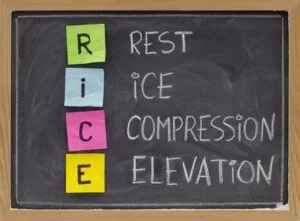
Treatment for neck muscle pain
RICE principle:
When you feel pain in the neck muscle doctor is suggested to follow the RICE principle as home treatment or primary treatment.
- R-rest: When you feel muscle pain doctor is a recommendation to your rest sometimes form activities reduce muscle pain.
- I-ice: Used to ice on the site of the pain for 20 minutes, release swellings & muscle pain but always used to the ice with the help of a towel between the skin & ice to control ice burn, you can also be applied to ice pack & frozen peas for ice therapy.
- C-compression: Also use a compression bandage to reduce muscle pain and swelling.
- E-elevation: It is not possible for neck muscle because it increases the pain but always use the soft pillow while sleeping.
Medical treatment:
You can also take to non-steroidal anti-inflammatory drugs: NSAIDs like diclofenac & etodolac which support to reduce of muscle pain.
In some circumstances, the doctor is used to muscle relaxants medication.
Antidepressant medicine-like as amitriptyline is prescribed in some cases.
You can also use pain relieving gel & spray like volini gel & spray on the part of muscle pain to release muscle pain & swelling.
Steroid injections:
When the neck pain is not reduced after pain medicine then the doctor has suggested steroid injection.
This injection is injected near the nerve roots.
This injection helps to relieve pain & inflammation.
Physiotherapy treatment for neck muscle pain
When the muscle pain is not reduced after the home treatment & pain medication then the doctor has recommended physiotherapy treatment to reduce muscle pain.
Physiotherapy treatment is help to relieve pain, spasms, tightness, and swelling of muscle pain.
The physiotherapy treatment involves massage, electrotherapy treatment & exercise therapy.
Massage :
When the trigger & tender points are present in the muscle pain area therapist is recommended massage therapy release to the muscle pain.
Massage is applied after 2 – 3 days of following the RICE principle when feels free of pain.
Massage is applied with the use of the oil & applied for 5 -10 minutes.
Massage is applied 3 times/day at home.
Electrotherapy treatment:
After the RICE principle, pain medicine, and massage if the muscle pain is not reduced then used Electrotherapy treatment for released to muscle pain.
To relieve the swellings, spasms, and pain therapist is suggested electrotherapy treatment.
In electrotherapy, the treatment physiotherapist is used in various modalities.
When the tender and trigger points are present physiotherapists are suggested and use Ultrasound therapy for the reduction of muscle pain.
This treatment is used with the help of gel & applies for 5 to 10 minutes on the area of pain.
This therapy helps to release pain and swelling.
Relieve to pain therapist is used to SWD: short wave diathermy, IFT: Interferential Therapy, TENS: Transcutaneous, and ES: Electrical Nerve Stimulation on the site of pain.
SWD: Short-wave diathermy is hot therapy for reducing spam in the site of pain.
IFT: Interferential Therapy and TENS: Transcutaneous Electrical Nerve Stimulation is used with the help of gel & electrodes on the site of pain.
This therapy is used for 10 minutes at the site of pain.
Cervical Traction:
Cervical traction is used by the physiotherapist in the clinic.
Pulleys & weights are applied to stretch the neck.
This traction is used to 1/7 your weight of you.
It is delivered to result in a herniated disk moving back into position.
Traction is used to reduce pain, but only while traction is applied.
Exercise for neck muscle pain
After following the RICE principle for 2- 3 days at home & primary treatment and the help of pain medicine, feel released from the pain.
When feeling too relaxed & reduce your muscle pain then the physiotherapist has suggested exercise therapy relieve to muscle weakness and tightness.
Exercise therapy for muscle pain contains strengthening and stretching Exercises.
Strengthening Exercise helps you to relieve muscle weakness, as well as Stretching exercise, helps to reduce muscle tightness.
Strengthening Exercises:
After the follow of Electrotherapy and massage for 2 -3 days for the release of neck muscle pain by the therapist then he/she is suggested to you do strengthening exercises for neck muscle weakness.
This strengthening exercise is always suggested when you feel to reduce pain & when you feel relaxed.
This all-strengthening exercise helps to muscle weakness and pain:
- Forward & Backward Tilt
- Shoulder Roll
- Neck Flexion (Forward Bending)
- Lateral Neck Flexion (Bending Side to Side)
- Neck Rotation (Turning Side to Side)
- Wall Push Up
- Theraban Rows
- Prone Rows
- Behind the Back Drill
- Shoulder rolls
- Side bends
- Head lifts
- Lateral raises
- Anterior raises
- Seated overhead press
- Rows
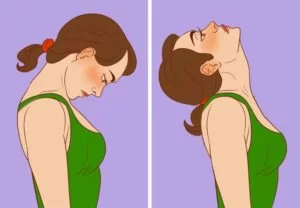
Forward & Backward Tilt:
The patient’s position is in a standing position.
Start this exercise with your head squarely over your shoulder joint and back straight.
Then lower your chin toward your chest and maintain this position for 15 seconds.
Relax and slowly lift your head back up.
Then tilt your chin up toward the roof & bring the base of your skull toward your back.
Maintain this position for 10 seconds & back to the starting position.
Do this exercise 10 times in 1 session and 3 sessions/day.
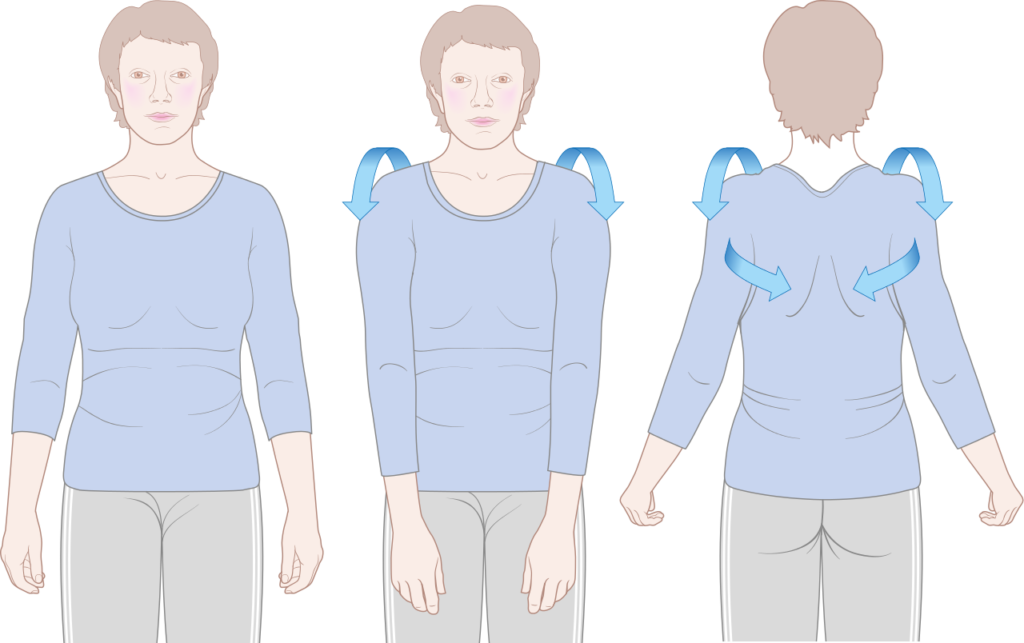
Shoulder Roll:
The patient’s position is in a standing position.
In the standing position lift your shoulder joints straight and move them in a circle moving forward.
performed in the side means clockwise 6 times.
And then back to the starting position and do another side means anticlockwise 6 circles.
Repeat this exercise 3 times/day.
Neck Flexion (Forward Bending):
The patient’s position is in standing & sitting positions.
Then Gradually lower the chin toward the chest and look downward while just moving the head.
One time when the head is bent forward as far as you can feel comfortable.
Maintain this position for 10 seconds before back to the starting position.
Do this exercise 10 times in 1 session and 3 sessions/day.
Lateral Neck Flexion (Bending Side to Side):
The patient’s position is in standing & sitting positions.
Then slowly flex the head to one side, like by obtaining the left ear toward the left shoulder joint.
During this exercise, the shoulder and back remain till while the neck bends laterally to the side.
One time when the head is bent as far as you can feel comfortable.
Try to maintain this position for 10 seconds before back to the head to a starting position.
Do this exercise 10 times in 1 session and 3 sessions/day.
Neck Rotation (Turning Side to Side):
The patient’s position is in standing & sitting positions.
You must hold the straight back and shoulder joint.
Then gradually flex the head to the left side as far as you can but without rising pain.
When your head is reached its rotation limitation.
Maintain this position for 10 seconds before back to the starting position.
Do this exercise 10 times in 1 session and 3 sessions/day.

Wall Push-Up:
The patient’s position is feet approximately shoulder-width apart.
Place the hands against the wall slightly below the shoulder joint level and elbows straight.
Flex the elbow joint while holding the head in a starting position.
Maintain this position for 10 seconds.
Do this exercise 10 times in 1 session and 3 sessions/day.
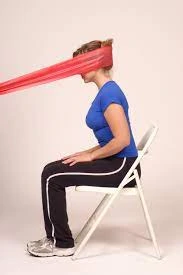
Theraban Rows:
First, place the theraband around a doorknob and tie a knot in the theraband and close it in the door.
Then place a band at chest level.
You are standing tall with each end of theraband in your hands and knee joint slightly flex, and abdominal muscles tight.
Must be held tight trunk muscles and pull arms back while squeezing the shoulder blades together.
You are attempting to concentrate on squeezing the shoulder blades without shrugging the shoulder joint up towards the ears.
Then back to starting position but do not lean back.
Maintain this position for 10 seconds.
Do this exercise 10 times in 1 session and 3 sessions/day.
Prone Rows:
The patient’s position lying on the stomach means a prone position with arms dangling off the side of the bed.
For comfort use a pillow beneath the stomach.
Start this exercise by pulling the arms back while flexing the elbow joint and squeezing the shoulder blades together then slowly back to starting position.
But always take care of these things do not lift your head and pull your arms back.
Maintain this position for 10 seconds.
Do this exercise 10 times in 1 session and 3 sessions/day.
Behind the Back Drill:
The patient’s position is in lying facedown.
Put both palms down on the back of your head.
Your elbow joint is pointed out to the sides.
This is the starting position of this exercise.
After then extend your arms in the shape of the letter Y.
and try to reach your arms as wide as you can and circle them down the sides of your body with palms down.
You must hold your palms down and flip your hands over to palms up and bring your hands to the center of your lower back.
Maintain this position for 10 seconds.
Do this exercise 10 times in 1 session and 3 sessions/day.
Side bends:
The patient’s position is to extend both arms straight above the head and clasp your hands.
Without flexing the neck try to lean slowly toward the left side.
back to the center and must keep the arms above the head.
Repeat this same motion on the right side.
Maintain this position for 10 seconds.
Do this exercise 10 times in 1 session and 3 sessions/day.
Head lifts:
The patient’s position is to lie flat on the back with the arms stretched to the sides.
Nod the head and tuck in the chin.
Maintain this position for a few seconds before releasing the return to a starting position.
Maintain this position for 10 seconds.
Do this exercise 10 times in 1 session and 3 sessions/day.
Lateral raises:
The patient’s position is in standing with the feet shoulder-width apart and weight in each hand.
Must be held the body still, and move the arms outward till they are level with the shoulder joint.
Then slowly lower the arms return to the side and repeat.
Maintain this position for 10 seconds.
Do this exercise 10 times in 1 session and 3 sessions/day.
Anterior raises:
The patient’s position is holding the weights in each hand and standing upright.
Then slowly move both weights forward and away from the body.
Must hold the arms straight and keep moving till the weights are level with the shoulder joint.
Then slowly back to the starting position.
Maintain this position for 10 seconds.
do this exercise 10 times in 1 session and 3 sessions/day.
Seated overhead press:
The patient’s position is in sitting on a bench or chair.
Grip the weights per hand level with the shoulder joints.
Must push the weights upward and extend the arms overhead.
Then slowly back the weights to the sides of the shoulder joint before repeating the movements.
Maintain this position for 10 seconds.
Do this exercise 10 times in 1 session and 3 sessions/day.
Rows:
The patient’s position is sitting on a bench & chair or standing up.
Tie a resistance band to a door handle and hold the band handles in front of you.
Ans pull the band handles toward the lower abdomen till they are in line with the side body and the elbow joint is behind you.
Gradually release before repeating.
Maintain this position for 10 seconds.
Do this exercise 10 times in 1 session and 3 sessions/day.
Stretching exercise for neck muscle pain
After the follow of Electrotherapy for 2-3 days for release to muscle pain by the physiotherapist then he/she is suggested to stretch for release to muscle tightness.
This stretching is used when your pain is released and when you feel comfortable:
- Side Tilt
- Side Rotation
- Seated twist
- corner Stretch
- Levator Scapulae Stretch
- Upper Trapezius Stretch
- Doorway Stretch
- Seated Clasped Neck Stretch
- Thread the Needle

Side Tilt:
The patient’s position is in a standing position.
Then gently tilt your head toward your right shoulder joint and try to touch your head with your ear.
Stop this motion when you feel the stretch.
Don’t lift your shoulder joint.
Maintain this position for 10 seconds and back to the starting position.
Do this exercise 3 times in 1 session and 3 sessions/day.
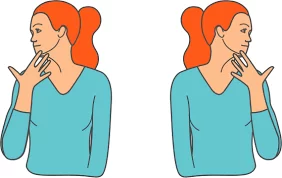
Side Rotation:
The patient’s position is in standing & sitting positions.
Must hold your head squarely over your shoulder joint and your back straight.
Then slowly rotate your head to the right till you feel a stretch in the side of your neck and shoulder joint.
Maintain this position for 10 seconds and slowly flex your head forward again.
Do this 3 times in 1 session and 3 sessions/day.
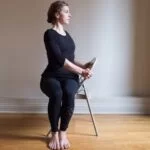
Seated twist:
The patient’s position is in sitting on a chair with a straight back.
Place the left hand on the right knee joint and gently pull to turn the shoulder joint to the right as if looking behind the chair.
Then slowly back to the center.
Repeat this exercise with the twist with the right hand on the left knee joint.
Maintain this position for 10 seconds.
Do this exercise 3 times in 1 session and 3 sessions/day.
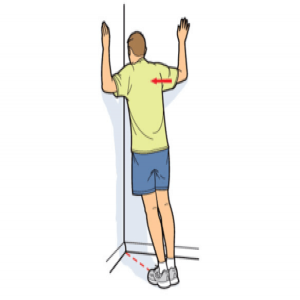
Corner Stretch:
The patient’s position is in a Standing position approximately two feet back from the corner and facing into the corner.
Must be put feet should be together.
Put the Forearms on each wall and the elbow joint is a little below shoulder joint height.
Then bend the body as far as possible without pain.
You are feeling a stretch in the front of the shoulder joint and chest.
Maintain this position for 10 seconds.
Do this exercise 3 times in 1 session and 3 sessions/day.
Levator Scapulae Stretch:
The patient’s position is in standing and sitting positions.
Then lengthen the muscle by lifting the elbow joint above the shoulder at the side to stretch.
In this position, rest the elbow joint against a door jamb.
This action turns the outside of the shoulder blade up and the inside of it down, which is provided to lengthen the levator scapulae muscle.
Then rotate the head away from the side which is given for stretching and bring the chin down.
You feel stretched at the back side of the neck.
Maintain this stretching for about 10 seconds.
Do this exercise 3 times in 1 session and 3 sessions/day.
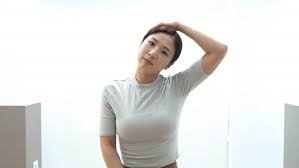
Upper Trapezius Stretch:
The patient’s position is in a sitting position up tall with good posture and must keep her shoulders down.
Try to hold the bottom of the seat with one hand.
Slightly flex your shoulder joint to ear till a comfortable stretch is felt on the opposite side of the neck.
Maintain this stretching position for 10 seconds.
Do this 3 times in 1 session and 3 sessions/day.
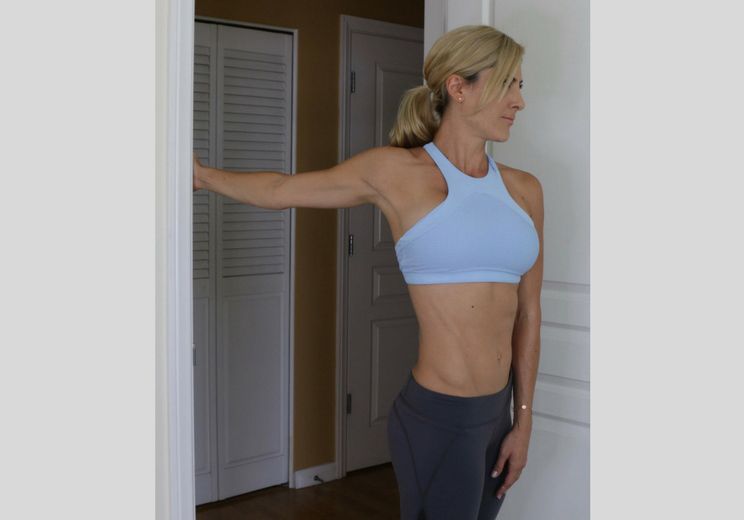
Doorway Stretch:
The patient’s position is in standing in a doorway with your hands and arms out to the side as shown in the picture.
Must maintain the forearms flat on the door frame.
Then take one step forward with one leg to feel a comfortable stretch in the chest part.
Maintain this exercise position for 10 seconds.
Do this exercise 3 times in 1 session and 3 sessions/day.
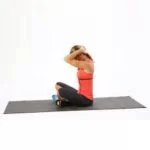
Seated Clasped Neck Stretch:
The patient’s position is in sitting comfortably on the ground and in a chair.
Must place your body in proper alignment.
Then clasp your hands and bring both palms to the back of your head.
Try to gently press your hands down toward your thighs and tuck your chin into your chest.
Maintain this stretching position for 10 seconds.
Do this exercise 3 times in 1 session and 3 sessions/day.
Thread the Needle:
The patient’s position is on all fours with your hands under your shoulder joint and hip joint over your knee joint.
Try to reach your right arm underneath and across your body with your palm facing up.
Flex your left elbow joint as you gently lean into your right side;
You are feeling a stretch in the back of your right shoulder joint.
Maintain this stretching position for 10 seconds.
Do 3 times in 1 session and 3 sessions/day.
Surgical treatment:
After the medical treatment and physiotherapy treatment pain is not reduced then the doctor is suggested surgical treatment.
Surgery for neck muscle pain is very rare.
Repair compressed and injured spinal disks so that fuse some vertebrae in the spine.
How to release neck muscle pain at home?
When you feel minor neck pain and stiffness you can use these simple steps at home relieve to neck pain:
- Apply to the ice for the first few days and then apply to heat with a hot compress/heating pad and by taking a hot shower.
- You must stop activities for a few days from sports which aggravate your symptoms and heavy lifting.
- You must be done exercise your neck every day and slowly stretch your head in side-to-side and up or down movements.
- Follow a good posture.
- In daily life avoid cradling the phone between your neck and shoulder joint.
- Try to vary your position frequently means don’t stand and sit in one position for too long time.
- Use a special neck pillow for sleeping.
- When you feel pain at that time don’t use a neck brace and collar without a doctor’s permission because when you don’t use them correctly, it causes symptoms worse.
Prevention of neck muscle pain?
Use good posture:
When you are in a standing and sitting position, must be sure your shoulder joint is in a straight line over your hip joint and your ears are directly over your shoulder joint.
Take to frequent breaks:
- When you travel long distances and work for long hours at your computer get up and move around and stretch your neck or shoulder joint.
- For this adjust your desk, chair, and computer so that the monitor is at your eye level.
- The knee joint is should be a little lower than the hip joint and also uses the chair’s armrests.
- Must avoid tucking the phone between your ear joint and shoulder when you are talking to somebody, try to use a headset or speakerphone.
- Avoid bringing heavy bags with straps over your shoulder joint because this weight is applied to your neck.
- You must be sleeping in a good position.
- Your head and neck should be aligned with your body also you can use a small pillow under your neck.
- Try to sleep on your back with your thighs which are heightened on pillows so that flatten your spinal muscles.
FAQ
What does neck muscle pain feel like?
When your neck is painful, you may have a problem moving it, such as turning to one side. Many people express this as having a stiff neck. If neck pain involves compression of nerves, you may feel numbness, tingling, or weakness in your arm or hand.
How long can muscular neck pain last?
Neck pain leads by muscle tension or strain generally goes away on its own within a few days. Neck pain that continues longer than several weeks usually reacts to exercise, stretching, physical therapy, and massage. Sometimes, may need steroid injections or even surgery to relieve neck pain.
How do know if neck pain is muscular?
Muscle spasm:
Your neck may injure and feel tight or knotted, and it may be impossible to bend your head. When you wake up with a sore, stiff neck, that’s likely a muscle spasm. Muscle spasms can result from muscle damage, but they may also occur in response to a spinal disc or nerve problem or even emotional tension.
What is the fastest way to relieve neck pain?
Hot and cold therapy. applying ice packs or heating pads can help reduce neck pain fast. Ice decreases inflammation, while heat relaxes stiff muscles. For best results, you may alternate the two for about 10 minutes several times a day.
What makes neck pain worse?
Poor posture, weak abdominal muscles & heavier body weight can affect your spine’s alignment and contribute to neck pain. For instance, straining your neck to consider a computer screen for long periods is a common cause of neck pain.

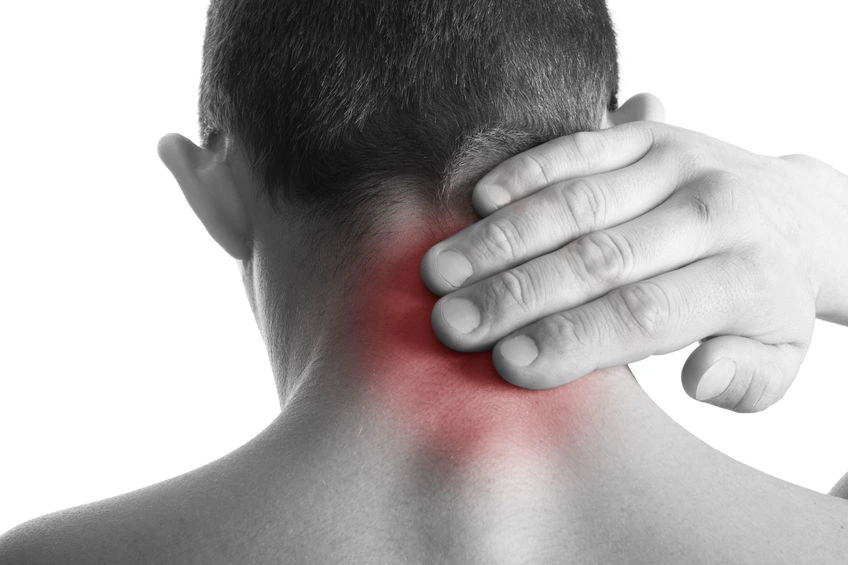
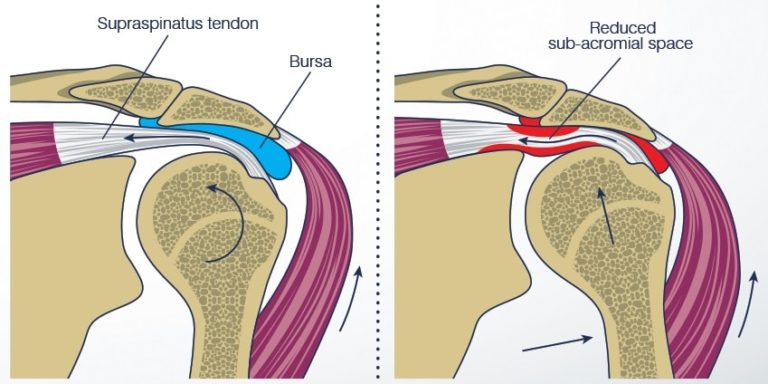
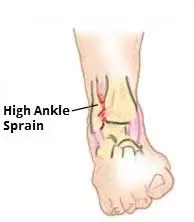

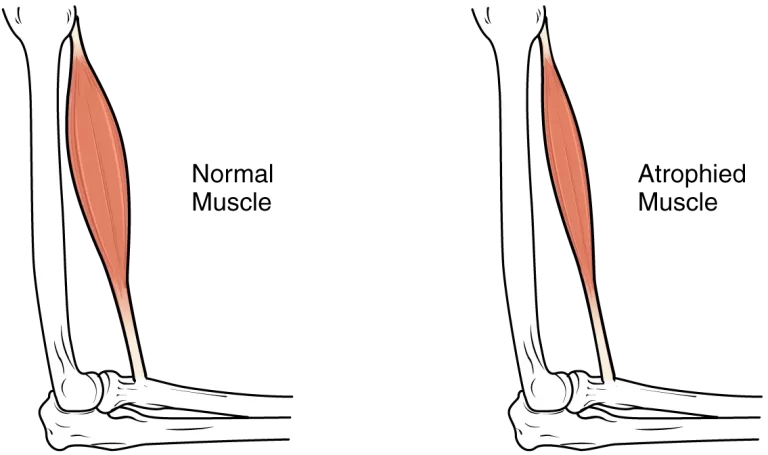
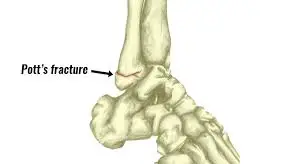
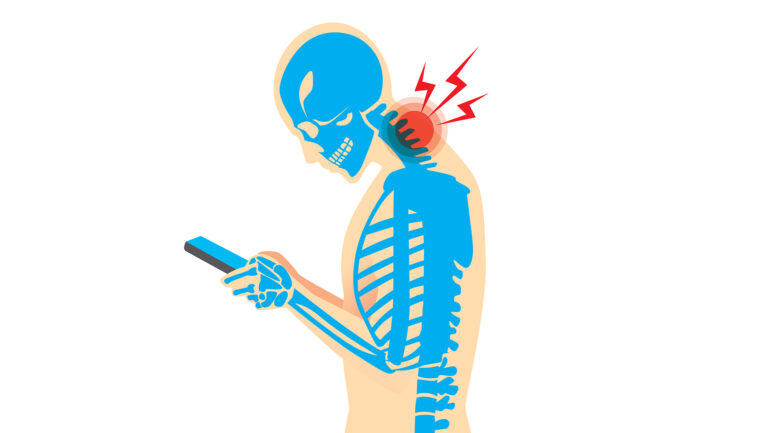
2 Comments